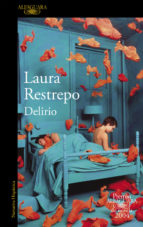 Gardam, Jane. The Stories of Jane Gardam. New York: Europa 2014.
Gardam, Jane. The Stories of Jane Gardam. New York: Europa 2014.
As you know from earlier posts, I do have a certain fondness for Jane Gardam, so when a friend lent me her copy of The Stories of Jane Gardam, I certainly didn’t refuse the offer. I was more familiar with her novels, and I have to admit here that I tend to prefer novels to short stories. The short story is somehow just too short. I also suspect that in a way reading several short stories one sitting becomes more emotionally exercising than immersing oneself in the development of the novel.
 One of the reasons why the good short story works, even in its limited scope, time frame, and cast of characters, results from the emotional journey the reader makes within the very concentrated span of the tale; however, such an experience can be a little daunting. I’m thinking particularly here of the stories of writers such as Alice Munro, whose stories are perfectly crafted and multi-layered, but whose intensity and somewhat bleak world view leave me exhausted. The stories I return to again and again are Joyce’s Dubliners and many of those written by Katherine Mansfield. It seems from what Gardam reveals in her introduction to the collection that she and I share this enjoyment of these two writers.
One of the reasons why the good short story works, even in its limited scope, time frame, and cast of characters, results from the emotional journey the reader makes within the very concentrated span of the tale; however, such an experience can be a little daunting. I’m thinking particularly here of the stories of writers such as Alice Munro, whose stories are perfectly crafted and multi-layered, but whose intensity and somewhat bleak world view leave me exhausted. The stories I return to again and again are Joyce’s Dubliners and many of those written by Katherine Mansfield. It seems from what Gardam reveals in her introduction to the collection that she and I share this enjoyment of these two writers.
 This introduction also tells us that The Stories of Jane Gardam was undertaken in response to a request from her publisher Richard Beswick of Little, Brown, who had “asked for ‘a big, chunky anthology of all . . . [her] favourite short stories’”(16). These “favourite” twenty-eight stories (thirty if you count the three sections of Telegony (341-381) as individual stories) span thirty years from 1977 to 2007. In some of them we meet characters such as Edward Feathers, Old Filth, whom we’ve met before in the novels. For the most part, I found the stories took me into familiar Gardam territory, a particularly English place, a middle-class place, a place of people who know the “passwords” (“Rode By All With Pride” Stories 155).
This introduction also tells us that The Stories of Jane Gardam was undertaken in response to a request from her publisher Richard Beswick of Little, Brown, who had “asked for ‘a big, chunky anthology of all . . . [her] favourite short stories’”(16). These “favourite” twenty-eight stories (thirty if you count the three sections of Telegony (341-381) as individual stories) span thirty years from 1977 to 2007. In some of them we meet characters such as Edward Feathers, Old Filth, whom we’ve met before in the novels. For the most part, I found the stories took me into familiar Gardam territory, a particularly English place, a middle-class place, a place of people who know the “passwords” (“Rode By All With Pride” Stories 155).
 However, despite their sense of not quite superiority but of confidence they are right, the people in Gardam’s stories are often exiled from the world around them. They are returned ex-patriots who served a Britain that no longer exists; they are “dotty little” (“Easter Lilies”Stories 159) women with nothing left in their lives but the church, people who find that after being “out East thirty years there’s limits to Welwyn” (“the First Adam” Stories 177). They live in Putney, Wimbledon, and Barnes. They are not as well off as they used to be. Often, they are growing old, cut off from the security of their pasts. As I reconsider these stories and try to find connections between them, I realise that what pervades much of the collection is a sense of loss: a loss of a time long passed, loss of youth, loss of love. Gardam’s characters are separated from their pasts, from their children, from their lovers. While the stories are pervaded by a sense of wistfulness at times, even nostalgia, it’s a delicious reminiscence, delicious as the memories evoked by the smell of lavendered sheets, say, or by the sound of a blackbird in an English summer evening garden that recalls other evenings, other times.
However, despite their sense of not quite superiority but of confidence they are right, the people in Gardam’s stories are often exiled from the world around them. They are returned ex-patriots who served a Britain that no longer exists; they are “dotty little” (“Easter Lilies”Stories 159) women with nothing left in their lives but the church, people who find that after being “out East thirty years there’s limits to Welwyn” (“the First Adam” Stories 177). They live in Putney, Wimbledon, and Barnes. They are not as well off as they used to be. Often, they are growing old, cut off from the security of their pasts. As I reconsider these stories and try to find connections between them, I realise that what pervades much of the collection is a sense of loss: a loss of a time long passed, loss of youth, loss of love. Gardam’s characters are separated from their pasts, from their children, from their lovers. While the stories are pervaded by a sense of wistfulness at times, even nostalgia, it’s a delicious reminiscence, delicious as the memories evoked by the smell of lavendered sheets, say, or by the sound of a blackbird in an English summer evening garden that recalls other evenings, other times.
 What prevents Gardam’s stories from evoking deep melancholia is her compassionate, gentle humour. As often happens in some of the best short stories, there is always a twist at the end, an epiphany or situational irony that turns the story around. Some of these twists are intensely satisfying: the really snobby and selfish tend to get their comeuppance as in “The Tribute,” (101-117) and “The Easter Lilies” (159-173); young lovers are reunited in “Lunch with Ruth Sykes” (41-56). For the most part, the stories suggest that good can ultimately come even from disappointment, and even when a story ends on a minor note as is the case in “An Unknown Child” (211-225) or “Rode By All With Pride,” (139-157) for instanc,” Gardam’s treatment of her characters’ despairing realisation of their own blindness is gentle and sympathetic.
What prevents Gardam’s stories from evoking deep melancholia is her compassionate, gentle humour. As often happens in some of the best short stories, there is always a twist at the end, an epiphany or situational irony that turns the story around. Some of these twists are intensely satisfying: the really snobby and selfish tend to get their comeuppance as in “The Tribute,” (101-117) and “The Easter Lilies” (159-173); young lovers are reunited in “Lunch with Ruth Sykes” (41-56). For the most part, the stories suggest that good can ultimately come even from disappointment, and even when a story ends on a minor note as is the case in “An Unknown Child” (211-225) or “Rode By All With Pride,” (139-157) for instanc,” Gardam’s treatment of her characters’ despairing realisation of their own blindness is gentle and sympathetic.
 Most of the reversals in her stories are not completely devastating to her characters. In “Hetty Sleeping” (22-40), for example, Hetty discovers her old lover and her tutor in art school Heneker has run off with the pub barmaid even though only the night before he had protested, “‘there was never anyone but you, Het’” (37). We are not distressed by Hetty’s loss of Heneker; we’re actually rather glad, for we understand Hetty’s situation only too well. What Hetty is actually mourning is not Heneker, but the dream of her lost past self. This is not a story about a woman trapped by societal and patriarchal expectations; it’s a story about how she has grown into the choices she has herself made. Heneker reminds Hetty that it was she who left him all those years ago, reminds her of her own tidiness, her desire for order, of the fact that even then she had already given up painting. She made the choice not to have a life with Heneker. It isn’t in her nature to live the sort of life she would have lived with him. It is in her nature to live the sort of life she has with her husband, Charles. The story ends with Charles bringing her tea. Gentle and understanding, he asks her to “‘wake up soon’” (40).
Most of the reversals in her stories are not completely devastating to her characters. In “Hetty Sleeping” (22-40), for example, Hetty discovers her old lover and her tutor in art school Heneker has run off with the pub barmaid even though only the night before he had protested, “‘there was never anyone but you, Het’” (37). We are not distressed by Hetty’s loss of Heneker; we’re actually rather glad, for we understand Hetty’s situation only too well. What Hetty is actually mourning is not Heneker, but the dream of her lost past self. This is not a story about a woman trapped by societal and patriarchal expectations; it’s a story about how she has grown into the choices she has herself made. Heneker reminds Hetty that it was she who left him all those years ago, reminds her of her own tidiness, her desire for order, of the fact that even then she had already given up painting. She made the choice not to have a life with Heneker. It isn’t in her nature to live the sort of life she would have lived with him. It is in her nature to live the sort of life she has with her husband, Charles. The story ends with Charles bringing her tea. Gentle and understanding, he asks her to “‘wake up soon’” (40).
 How well Gardam understands that feeling of nostalgia for what might have been and reveals how we know we don’t truly regret it. She knows how love is not always passion but often compromise, how people learn to accommodate each other. Even in her more gothic stories such as “The Boy who Turned into a Bike” (383-391), “The Green Man” (423-450), and “A Spot of Gothic” (89-100), for example, there is still that note of wistfulness. But that yearning is acknowledged with a kind of relief, with what I might call the optimism of acceptance, that sense of accepting and carrying on and making the best of things. There are some who would say that this is a very English trait, but then, as I said earlier, Gardam’s milieu is very English.
How well Gardam understands that feeling of nostalgia for what might have been and reveals how we know we don’t truly regret it. She knows how love is not always passion but often compromise, how people learn to accommodate each other. Even in her more gothic stories such as “The Boy who Turned into a Bike” (383-391), “The Green Man” (423-450), and “A Spot of Gothic” (89-100), for example, there is still that note of wistfulness. But that yearning is acknowledged with a kind of relief, with what I might call the optimism of acceptance, that sense of accepting and carrying on and making the best of things. There are some who would say that this is a very English trait, but then, as I said earlier, Gardam’s milieu is very English.
I n her introduction, Gardam asserts that writing short stories teaches you when to stop (16). I wouldn’t argue with that. Her tone in that introduction is valedictory. She ends by saying, “The luck in the writer’s life always is to have been able to use the sweets of fiction to get near the truth” (17). If the luck in a reader’s life is to meet a writer whose creation is “near the truth,” then the readers of Jane Gardam are very lucky indeed.
n her introduction, Gardam asserts that writing short stories teaches you when to stop (16). I wouldn’t argue with that. Her tone in that introduction is valedictory. She ends by saying, “The luck in the writer’s life always is to have been able to use the sweets of fiction to get near the truth” (17). If the luck in a reader’s life is to meet a writer whose creation is “near the truth,” then the readers of Jane Gardam are very lucky indeed.
Advertisements Share this:





